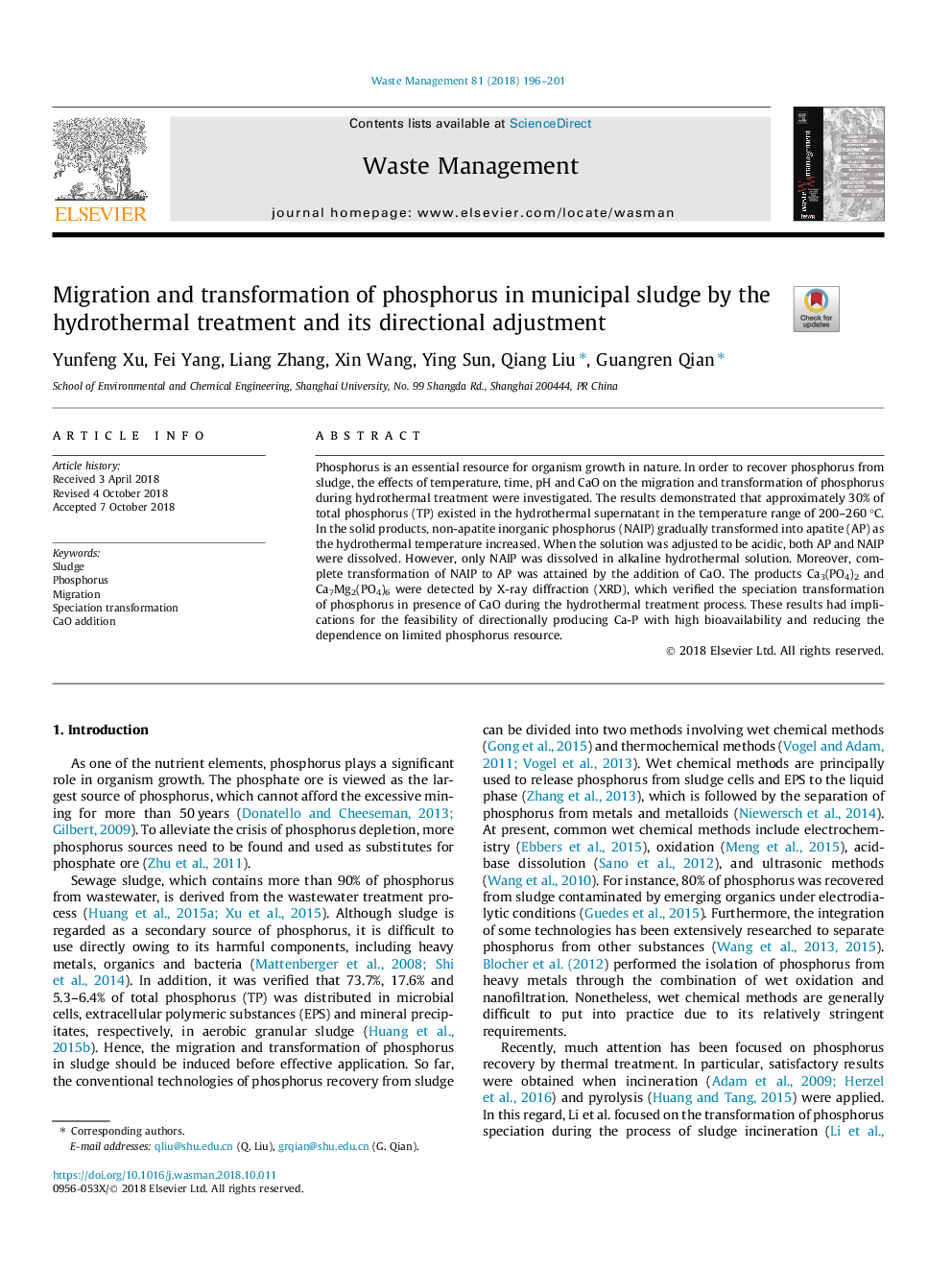| Article ID | Journal | Published Year | Pages | File Type |
|---|---|---|---|---|
| 11013079 | Waste Management | 2018 | 6 Pages |
Abstract
Phosphorus is an essential resource for organism growth in nature. In order to recover phosphorus from sludge, the effects of temperature, time, pH and CaO on the migration and transformation of phosphorus during hydrothermal treatment were investigated. The results demonstrated that approximately 30% of total phosphorus (TP) existed in the hydrothermal supernatant in the temperature range of 200-260â¯Â°C. In the solid products, non-apatite inorganic phosphorus (NAIP) gradually transformed into apatite (AP) as the hydrothermal temperature increased. When the solution was adjusted to be acidic, both AP and NAIP were dissolved. However, only NAIP was dissolved in alkaline hydrothermal solution. Moreover, complete transformation of NAIP to AP was attained by the addition of CaO. The products Ca3(PO4)2 and Ca7Mg2(PO4)6 were detected by X-ray diffraction (XRD), which verified the speciation transformation of phosphorus in presence of CaO during the hydrothermal treatment process. These results had implications for the feasibility of directionally producing Ca-P with high bioavailability and reducing the dependence on limited phosphorus resource.
Keywords
Related Topics
Physical Sciences and Engineering
Earth and Planetary Sciences
Geotechnical Engineering and Engineering Geology
Authors
Yunfeng Xu, Fei Yang, Liang Zhang, Xin Wang, Ying Sun, Qiang Liu, Guangren Qian,
